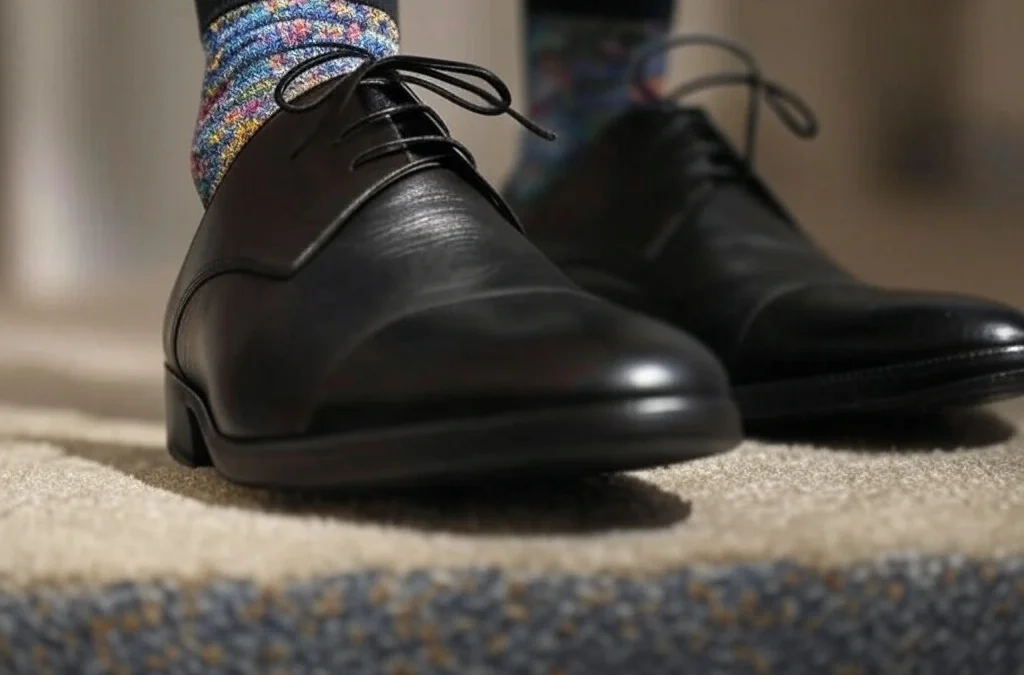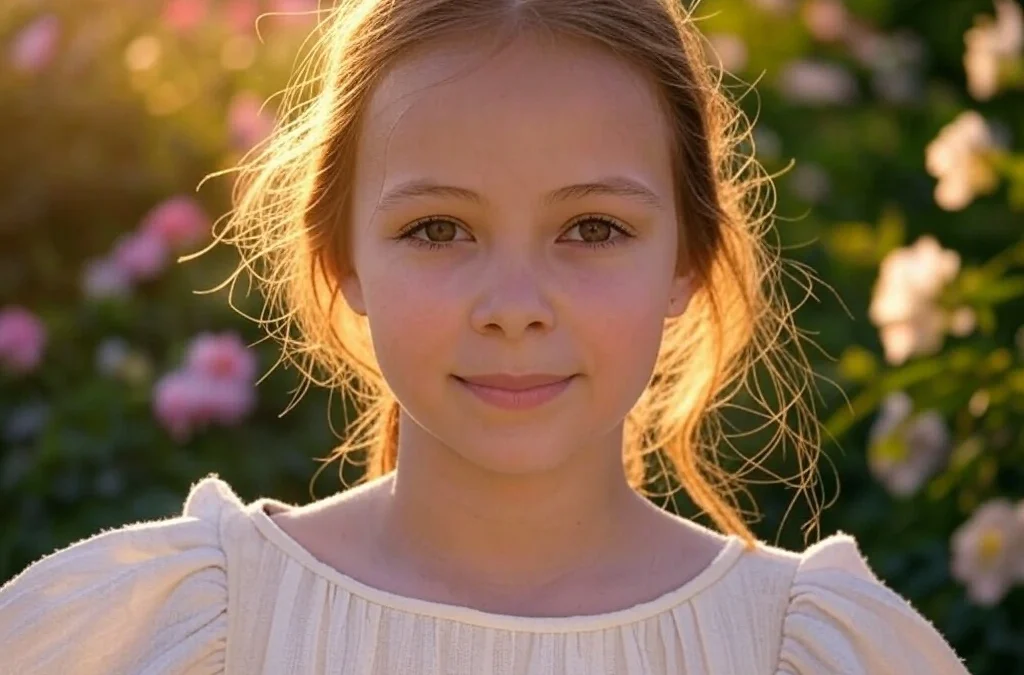Have you ever noticed how a simple smile from a stranger can brighten your day? Friendliness is a powerful tool that can turn ordinary moments into memorable ones. It’s the warm greeting you receive from a neighbor, the helping hand from a colleague, or the thoughtful text from a friend you haven’t seen in a while. These small acts make our lives richer and more connected. In a world where we often rush from one thing to the next, taking a moment to be kind and open can make a big difference.
Friendliness is not just about grand gestures; it’s often found in everyday interactions. Think about the barista who remembers your name and your favorite order, or the person who holds the door open when your hands are full. These examples remind us that friendliness is all around us, waiting to be shared and appreciated. By recognizing and practicing small acts of kindness, we can help create a more welcoming and positive environment for everyone. Whether it’s at work, in your neighborhood, or online, a little friendliness can go a long way in making the world a better place.
Defining Friendliness
Friendliness is the quality of being kind, pleasant, and approachable in social interactions. It involves displaying warmth and openness towards others, making them feel comfortable and valued. A friendly person often greets others with a smile, listens attentively, and communicates with empathy and respect. Friendliness is not only about being polite; it is also about showing genuine interest in others and fostering a positive atmosphere. This trait is essential for building strong relationships, enhancing communication, and creating a supportive community. By practicing friendliness, individuals contribute to a more harmonious and welcoming environment.
The Best Examples of Friendliness
Friendliness doesn’t require any special skills or grand gestures. Anyone can be friendly by showing interest in others, being approachable, and offering help whenever possible. By recognizing and valuing these small acts, we can cultivate a friendlier, better world, one that values kindness, openness, and respect.
1. Welcoming a New Neighbor
Imagine someone moving into a new neighborhood. They might feel a bit lonely or unsure. A friendly neighbor could knock on their door, introduce themselves, and perhaps offer some helpful tips about the area. Even a simple “Welcome to the neighborhood!” can make a big difference, showing warmth and a willingness to connect.
2. Helping Someone Lost
Sometimes people get lost, especially in busy places like airports or large cities. A friendly person might stop to help someone who looks confused. Offering directions, a map, or even walking them part of the way shows kindness. It’s not just about solving a problem; it’s about showing someone they’re not alone and that people care.
3. Checking in on Friends
Friendliness isn’t only shown in big gestures. It’s also about small acts, like checking in on friends, even if you haven’t spoken in a while. A quick message or call to say, “Hey, how have you been?” can mean a lot. It shows you care about them and value the relationship, no matter the distance or time between conversations.
4. Listening Without Interrupting
Sometimes, friendliness is as simple as being a good listener. When someone shares their thoughts, stories, or troubles, a friendly person listens closely, without rushing to reply or interrupt. This kind of attentiveness shows respect and empathy. It can help the other person feel heard, valued, and understood.
5. Sharing a Smile or a Greeting
A smile or a simple “Good morning” can lift someone’s spirits instantly. Even if it’s brief, this small act of friendliness can make people feel more connected, especially in places where everyone seems busy or distant. It’s a small thing, but it can make a big difference in someone’s day.
6. Offering a Seat
Imagine a crowded bus or train. A friendly person notices someone who looks tired or is carrying a child. They offer their seat with a warm smile, showing they’re thinking of others’ comfort before their own. This gesture goes beyond courtesy; it’s a genuine expression of kindness and awareness of others.
7. Introducing People to Each Other
If you know two people who might get along, introducing them can be an act of friendliness. A friendly person brings people together, creating new connections and friendships. It’s not only thoughtful but also builds a stronger, more supportive community around you.
8. Volunteering Time for a Community Event
When someone volunteers for a local event, they’re not just helping with a task. They’re showing friendliness to their whole community. Whether it’s a school fundraiser, a park cleanup, or a charity event, their presence shows they care about the people around them and want to contribute to something bigger.
9. Complimenting a Stranger
Compliments can be powerful acts of friendliness. If someone admires a stranger’s outfit, smile, or helpful nature, saying something kind can brighten that person’s day. A genuine compliment, even between strangers, can make people feel valued and appreciated.
10. Showing Patience in Busy Places
When things get busy, people can become impatient. But friendliness means staying calm and patient, even in a rush. Letting someone with only one item go ahead in line, or patiently waiting while someone handles an unexpected issue, shows respect. It’s a small way of putting others at ease and making life less stressful.
11. Helping Someone Carry Heavy Bags
If you see someone struggling with heavy bags, offering to help can be a great act of friendliness. It’s a way to lend a hand to someone who needs it, without expecting anything in return. This simple offer can mean a lot, especially to someone elderly or who’s just having a tough day.
12. Remembering Important Dates
Remembering a friend’s birthday, anniversary, or an important day in their life shows that you care. It could be a quick text or a short call just to say you’re thinking of them. This small, thoughtful act shows that you value their happiness and want to be part of their special moments.
13. Holding the Door Open
Something as small as holding the door open for the person behind you can be a true act of friendliness. It only takes a second but shows you’re considerate and aware of others. It’s a small action that can easily make someone’s day a little easier and a little brighter.
14. Offering a Hand to Someone Struggling with Technology
When people struggle with technology, a friendly offer to help can make a big difference. It could be a colleague who’s unfamiliar with a program or an older family member trying to use a new device. Patience and a willingness to assist in such moments reflect kindness and understanding.
15. Inviting Someone Who Seems Left Out
In social settings, some people can feel left out. A friendly person notices this and goes out of their way to include them. Inviting someone to join in a conversation or activity can help them feel more comfortable and included, turning a potentially lonely moment into a joyful one.
16. Sharing Food or Snacks
Whether at work, school, or a gathering, sharing food can be a very friendly gesture. Offering a snack or treat to someone shows generosity and creates a bond, even if it’s brief. Sharing often sparks small conversations and brings people together in simple, friendly ways.
17. Acknowledging Others’ Efforts
A friendly person recognizes the hard work of others. Whether it’s thanking a coworker for their contributions or acknowledging someone’s effort on a project, this kind of positivity makes people feel valued. It’s a small but powerful way to spread kindness and appreciation.
18. Giving Up a Parking Spot
In a crowded parking lot, giving up a spot for someone who seems to be searching can be a surprising act of friendliness. Even though it’s a small sacrifice, it shows that you’re thoughtful and willing to make someone’s day a bit easier. It’s a selfless, kind act that often catches people by surprise.
19. Offering to Babysit or Pet-sit
If a friend or family member needs help with their kids or pets, offering to babysit or pet-sit shows true friendship and friendliness. This gesture involves your time and care, making it even more meaningful. It helps the person feel supported and gives them a little break when they need it.
20. Sending a Thoughtful Message ‘Just Because’
Sometimes friendliness is shown in unexpected ways, like sending a kind message for no particular reason. Maybe you just thought of them or wanted to wish them a good day. This small gesture lets someone know you care and can brighten their mood, even if it’s only a short message.
21. Helping a Parent with Young Kids in Public
Seeing a parent struggling with kids in a public place, a friendly person might offer to help. This could mean entertaining a curious toddler while the parent handles something, or helping to pick up items that were dropped. It’s a kind way of making things easier for someone who might feel overwhelmed.
22. Offering to Take a Group Photo
When people are trying to take a group selfie, stepping in to offer to take the photo for them is a friendly gesture. It only takes a moment but ensures everyone gets to be in the picture. This simple act can add a personal touch to someone’s memory, making it even more special.
23. Bringing a Small Gift for a Host
When visiting someone’s home, bringing a small gift – like flowers or a dessert – shows appreciation for their hospitality. This friendly gesture is a way to thank them for their efforts in welcoming you. It’s a thoughtful action that makes hosts feel valued.
24. Responding Kindly to a Service Worker
Friendly people treat service workers – like waiters, cashiers, or delivery drivers – with extra kindness. Saying “thank you,” or simply making eye contact and offering a friendly smile, can make these workers feel appreciated. It’s an easy way to show respect and warmth in brief encounters.
25. Offering to Help with Moving
Moving can be exhausting and stressful. A friendly friend or neighbor might volunteer to help pack or lift boxes, making the process easier. This generous use of time and energy shows genuine care, turning a difficult task into something more manageable with a friend’s support.
26. Cheering Someone On
When someone is nervous about a presentation, test, or big moment, a friendly person gives words of encouragement. A simple “You’ve got this!” or “I believe in you!” can boost confidence and ease nerves. It’s a thoughtful way of letting someone know you’re rooting for them.
27. Offering a Ride When Needed
If a friend or coworker needs a ride, offering to drive them is a helpful act of friendliness. This can be especially meaningful if they’re dealing with car troubles or can’t access transportation. It’s a practical way to show support and build a sense of trust and connection.
28. Teaching a Skill or Hobby
Friendly people enjoy sharing their skills with others, like teaching someone to cook a recipe, play a game, or start a craft. Offering to teach something you know is a fun way to spend time together, and it can help the other person feel more confident in learning something new.
29. Offering Encouragement in Online Spaces
In online forums or social media, friendly people spread positivity. When someone shares something personal or creative, a friendly comment like, “This is amazing!” or “Thank you for sharing!” can brighten someone’s day. Friendly words online can feel just as impactful as they do in person.
30. Helping Someone Who Doesn’t Speak the Language Well
In multilingual places, a friendly person might assist someone struggling with language barriers. Translating or helping with a simple phrase can make a world of difference to someone trying to navigate an unfamiliar place. This thoughtful action shows respect and friendliness across cultural lines.
The Powerful Benefits of Kindness
Being friendly brings countless benefits, both for us and those around us. When we’re friendly, we create a positive ripple effect, making others feel appreciated, welcomed, and valued. Friendliness helps build stronger connections and more meaningful relationships, and these connections are what make life rich and fulfilling. When we take a moment to smile, greet someone warmly, or listen with genuine interest, we’re not just being polite – we’re creating bonds that bring joy and support into our lives.
Friendliness also has a way of making us feel good, too. When we spread kindness, we feel lighter, happier, and more at peace. Friendly people are often viewed as approachable, which means they’re more likely to receive kindness in return. Over time, being friendly can boost self-esteem and reduce feelings of loneliness. People feel drawn to kindness and warmth, which means that being friendly often opens doors to new friendships and opportunities. In fact, friendly people tend to feel a deeper sense of community and belonging, whether at work, at home, or even in casual interactions with strangers.
But the benefits of friendliness don’t stop with us – they extend to everyone we meet. A friendly attitude helps build a welcoming, positive atmosphere that others feel comfortable in. When we’re friendly, we inspire others to be friendly, too, and that creates a cycle of positivity. People who experience friendliness in their daily lives often feel less stressed and more optimistic. It’s a small gift we can give freely, and it has the power to uplift the whole community.
Being friendly may not seem like much, but it can be the start of something bigger. It helps us live in harmony with others and creates a world where kindness is the norm. In a world that sometimes feels disconnected, friendliness can bring us closer, one smile, one greeting, and one kind word at a time.
Understanding the Psychology Behind Friendliness
Friendliness is a social trait that plays a vital role in human interactions. From a psychological perspective, friendliness is often associated with empathy, openness, and a genuine interest in others. This trait can be seen as a combination of behaviors, attitudes, and emotional responses that aim to create a positive interaction with others. One of the key psychological aspects of friendliness is its ability to foster trust and cooperation. When individuals exhibit friendly behaviors, such as smiling, maintaining eye contact, and using a warm tone of voice, they signal to others that they are approachable and trustworthy. This can lead to more effective communication and stronger relationships.
Furthermore, friendliness can have a significant impact on mental health. Studies have shown that engaging in friendly interactions can boost mood and reduce stress. This is because friendly behaviors often trigger the release of oxytocin, a hormone associated with feelings of happiness and social bonding. By understanding the psychological foundations of friendliness, individuals can enhance their social skills and contribute positively to their personal and professional environments.
Friendliness and Emotional Intelligence: Building a Key Life Skill
Friendliness is more than a pleasant attitude; it’s a key part of emotional intelligence. Emotional intelligence involves understanding our own emotions and recognizing those of others, and friendliness is a natural way to express this skill. When we are friendly, we show empathy, social awareness, and respect, which can help us connect with people in meaningful ways. These qualities are essential for building trust and understanding in any relationship, from friendships to work connections.
Friendliness helps us manage emotions, both in ourselves and in others. For example, in stressful situations, a friendly approach can calm tensions and encourage open communication. This ties into the emotional intelligence skill of self-regulation, where we control our own reactions and respond with positivity. When we choose a friendly response, even under pressure, it reflects self-control and a focus on understanding others rather than simply reacting.
In addition, friendliness improves social awareness, which is another core aspect of emotional intelligence. Social awareness is about noticing the emotions and needs of others. Friendly people tend to be observant, picking up on subtle cues like body language or tone of voice. By showing friendliness, we show others that we are present and engaged, which can make people feel valued and understood. This ability to recognize and respond to others’ emotions creates a stronger foundation for positive interactions.
Friendliness also plays a role in conflict resolution, which requires emotional intelligence to handle disagreements calmly. When we approach conflicts with a friendly, understanding attitude, it’s easier to resolve issues without escalation. Being friendly allows us to listen carefully, find common ground, and work toward a solution that respects everyone’s perspective. This approach not only strengthens relationships but also builds our own emotional resilience, helping us become better problem-solvers.
Developing friendliness as a part of emotional intelligence can be life-changing. It leads to stronger relationships, more effective communication, and a positive reputation in both personal and professional settings. The habit of friendliness boosts our own mood and creates an atmosphere where others feel welcome and valued. By focusing on friendliness, we nurture the emotional intelligence skills that help us connect deeply with those around us. This skill, simple yet impactful, allows us to handle challenges, connect with empathy, and build lasting, meaningful relationships.
The Power of Friendliness in Customer Service
In customer service, friendliness is a game-changer. Customers love feeling valued and heard. A friendly tone can transform a simple transaction into a memorable experience. Employees who greet customers with a smile and a warm attitude often receive positive feedback. This can lead to repeat business and customer loyalty. It’s not just about solving problems; it’s about how you engage with people.
Friendliness in customer interactions also reduces tension. When a customer is frustrated, a calm and friendly approach can diffuse the situation. It can turn a potentially negative review into a positive one. Many businesses train their staff to prioritize friendliness, understanding its direct impact on customer satisfaction. The human touch in service is irreplaceable.
Even in online interactions, friendliness matters. Emails or chat messages that are polite and cheerful can enhance the customer’s perception of the brand. It can make digital interactions feel personal. Don’t underestimate the power of a friendly “hello” or “thank you” in customer service.
Friendliness as a Key to Workplace Harmony
A friendly workplace is often a productive one. When colleagues are friendly, they are more likely to collaborate effectively. This can lead to innovative solutions and creative problem-solving. Friendliness fosters an environment where team members feel comfortable sharing ideas without fear of judgment.
Managers who demonstrate friendliness can improve team morale. Employees feel more motivated when they know their leaders are approachable. A simple friendly gesture, like a compliment or a kind word, can make a huge difference. It builds trust and rapport within teams.
However, too much friendliness can sometimes blur professional boundaries. It’s essential to balance friendliness with professionalism. This ensures respect and maintains a healthy workplace dynamic. Still, genuine friendliness can lead to long-lasting workplace relationships. It creates a sense of community and belonging.
Read also: 30 Abstract Thinking Examples & Definition
The Most Popular on BitGlint

Top 100 Optimism Examples & Definition
Optimism is more than just looking on the bright side. It’s a mindset that shapes how people face challenges, make...

60 Things That are Unpredictable
No matter how much we plan, life has a way of surprising us. Some things follow a routine, but others can change in an...

30 Wishful Thinking Examples & Meaning
Wishful thinking is something we all do at some point. You hope things will turn out fine—even if there’s no real...

100 Things That Come in Pairs
Pairs are all around us. From what we wear to how we live, many of the things we use or see every day come in twos....

20 Frequency Examples in Daily Life and Physics
Have you ever noticed how often things repeat in everyday life? Maybe it’s the steady ticking of a clock, the rhythmic...

20 Infinity Examples & Definition
Infinity is one of the most powerful ideas people have ever thought about. It shows up in math, science, philosophy,...

30 Examples of Pragmatism & What It Really Means
What does it really mean to be pragmatic? It’s a word people often hear, but not everyone fully understands. In...
Get Inspired with BitGlint
The Latest
30 Satisfaction Examples & Meaning
Satisfaction is a feeling everyone knows but may find hard to describe clearly. It’s the quiet relief you get after finishing a tough job, the warmth you feel when spending quality time with loved ones, or even the simple comfort of eating a good meal when you're...

30 Naivety Examples & Definition
Naivety is something most people experience at some point in their lives. It often starts in childhood, but for some, it lasts much longer than it should. While it's not always obvious, naivety shows up in how we think, how we trust, and how we make decisions. Many...
100 Things That Are in The Sky
The sky is full of things - some you see every day, others only once in a while. Some are natural, like clouds and stars. Others are made by people, like airplanes and satellites. From quiet sunsets to loud rocket launches, the sky is never empty. People have been...
Top 30 Compassion Examples & Definition
Compassion, the emotional response that arises when one is confronted with another's suffering and feels motivated to relieve that suffering, is a cornerstone of human interaction and societal harmony. It transcends mere empathy, pushing individuals not just to...

